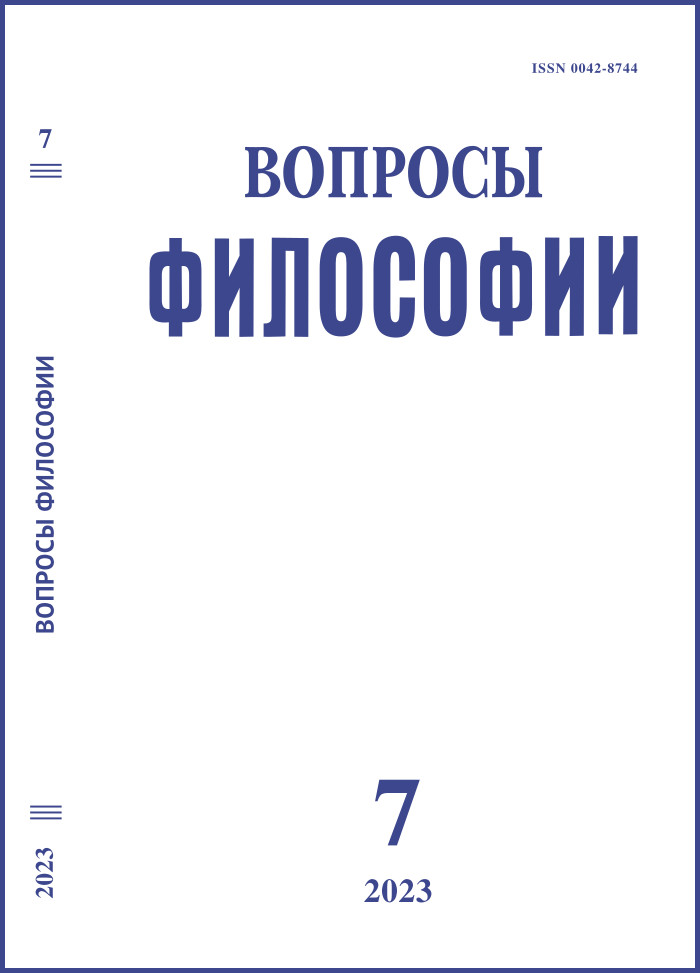Pragmatics as a Self-Generation of a Subject-on-Its Own
DOI:
https://doi.org/10.21146/0042-8744-2023-7-93-103Keywords:
semiotics, pragmatics, biosemiotics, subject of sign activity, interpretation, interpretant, quasi-speaker, Ch. Peirce, C. Morris, G. Prodi, M. Barbieri.Abstract
The article suggests reconsidering the accepted understanding of pragmatics as a relationship between a sign (system) and an autonomous subject. The possibility of this approach may be substantiated through Peirce’s ideas. In his concept, despite the presence of an interpretant and an interpretation, there is no room for an interpreter. Peirce’s understanding of sign as an algebraic relation did not require an appeal to thinking. However, the concept of interpretant should be associated with interlocutors. In Peirce’s unfinished conception, quasi-subjects (quasi-speaker and quasi-interpreter) arise, which are “melded” into a sign and are quasi-personified of the stages of semiosis. Peirce’s chronologically last semiotic conception demonstrates the possibility of semiotic operations, which does not imply an autonomous conscious subject. To develop this approach, we consider the processing of genetic information, where an interpreter and an interpretant are the same entity. Peirce’s method to derive communicants not from an external environment but from the sign itself can be extended to semiotic mega-systems (semiosphere, culture, language) when the semiotic structure acts, in the words of Yu. Lotman, as a subject and the object on its own. Thus, we suggest addressing pragmatics as the relationship between the sign object system and the meta-system that regulates its actualization. The meta-system appears as a semiotic self that controls the process of generation (quasi-speaker) and interpretation (quasi-interpreter).

